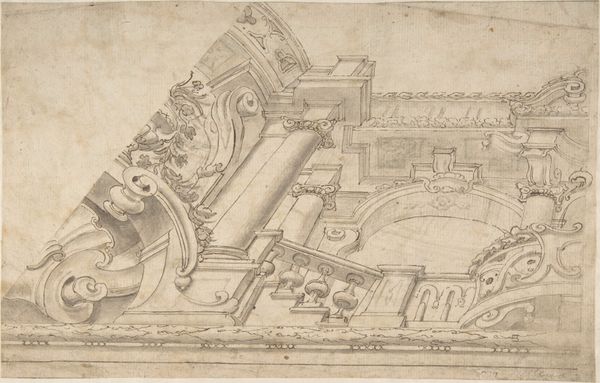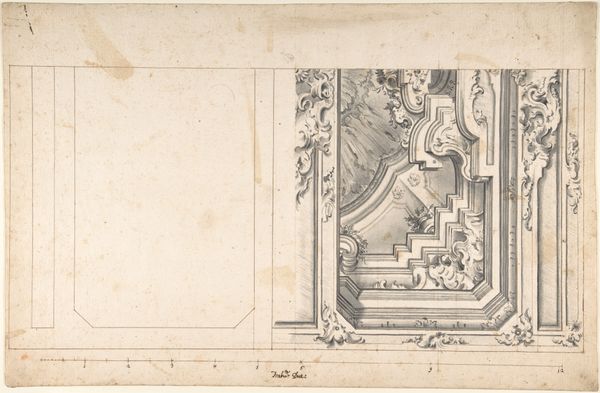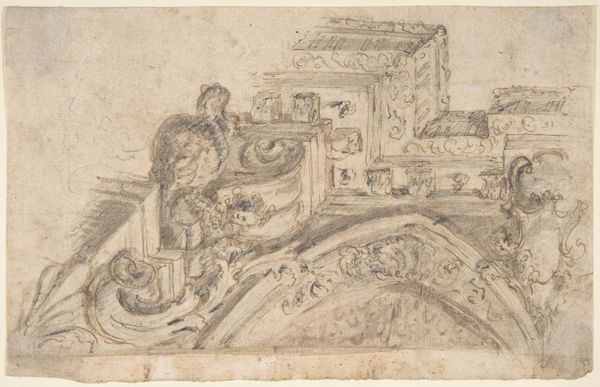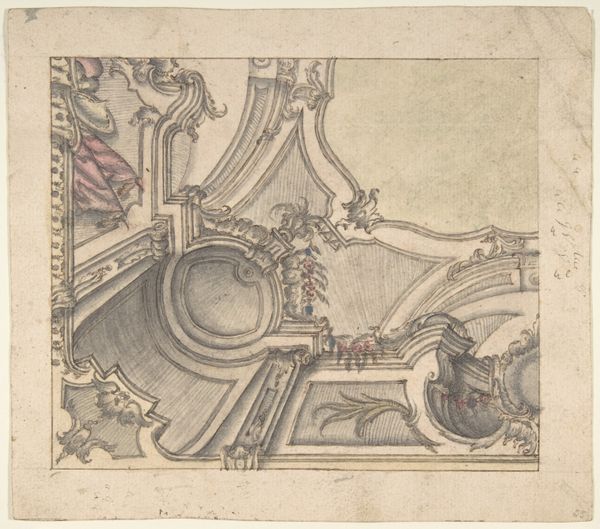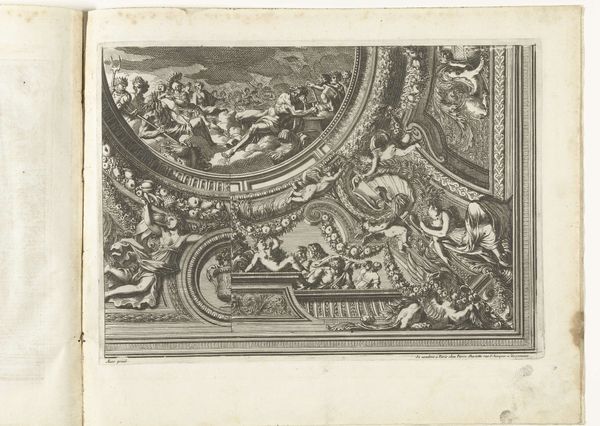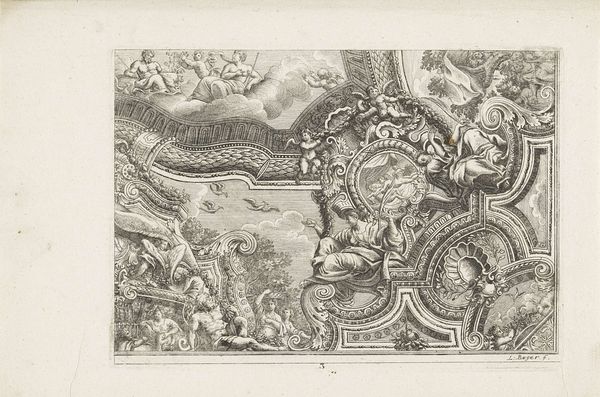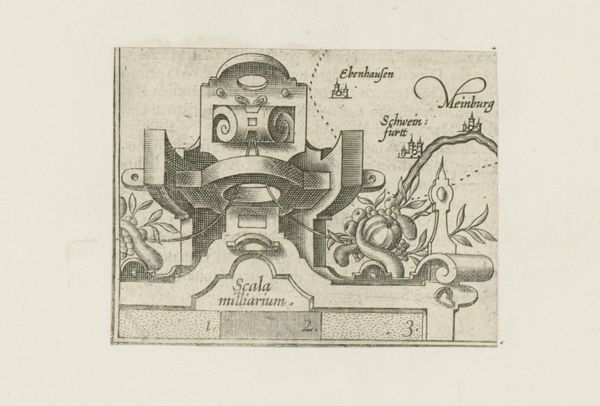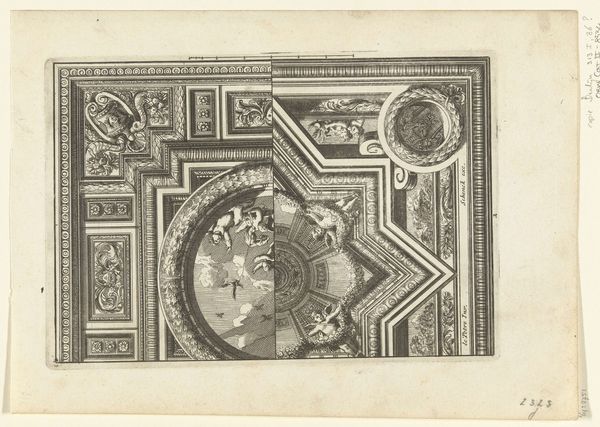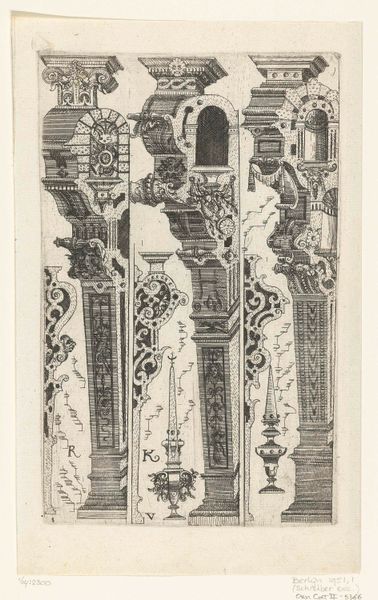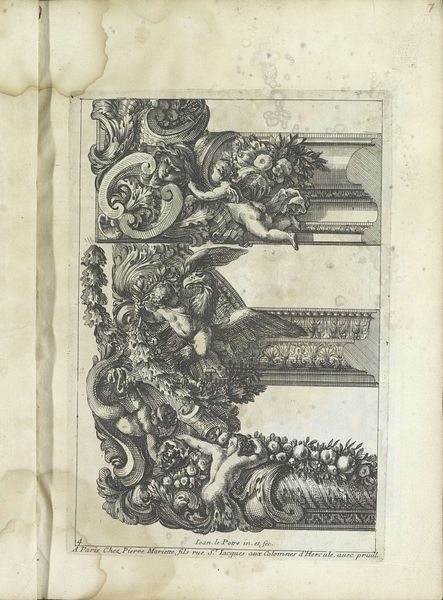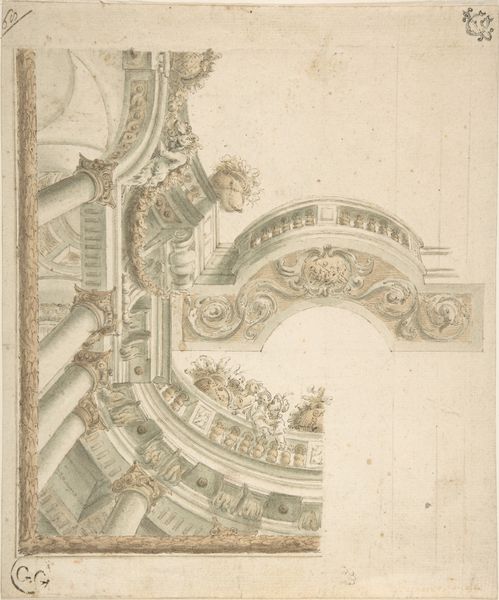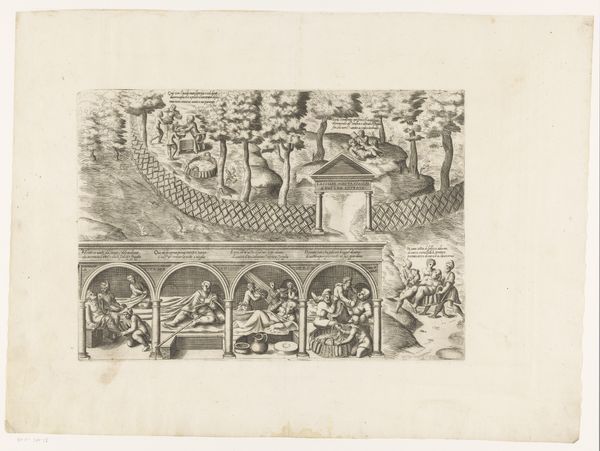
#
light pencil work
#
pen sketch
#
pencil sketch
#
old engraving style
#
personal sketchbook
#
pen-ink sketch
#
pen work
#
sketchbook drawing
#
pencil work
#
sketchbook art
Dimensions: height 193 mm, width 265 mm
Copyright: Rijks Museum: Open Domain
Curator: I find this sketch quite captivating. The draftsmanship seems very exact. Editor: Agreed! It immediately strikes me as meticulously rendered, almost architectural in its precision, and yet somehow conveys a whimsical sensibility, like a stage set waiting for its players. Curator: Exactly. The work, “Ontwerp voor een toneeldecor,” which translates to “Design for a Stage Set,” was rendered around 1707 by Carlo Antonio Buffagnotti. As the title suggests, it seems to be a preliminary drawing or perhaps a study for a more extensive set design, intended to grace the stage. Editor: Theater as spectacle played a key role in solidifying power and conveying narratives within the upper classes. Courtly performance acted as more than mere amusement; it embodied displays of wealth and promoted social ideals and dominance. Can you speak to the cultural context here? Curator: Absolutely. In the early 18th century, theater in many cities served as a vital tool for social cohesion and political messaging. Palatial stages showcased allegorical dramas and operas reinforcing noble identities and monarchical power. Designs such as these weren’t simply backdrops, they were politically and socially charged environments meant to be integrated into broader systems. Buffagnotti, undoubtedly, navigated a world steeped in such considerations. Editor: That said, from my view as an historian, the lack of human presence is what I notice the most. It’s all grandeur without the figures meant to inhabit the space. I'd argue that omission serves a potent purpose. Consider that stages are traditionally built to display dramatic action for a wider viewing public. The absent figures highlight the theatricality of elite life by showcasing monumental scale intended to influence how they want to be perceived within society. The set itself stands alone as a display of prowess and social commentary that is at once grand and empty. Curator: Your point is very astute! We cannot ignore the political messaging present throughout these depictions of empty sets. The absent players bring awareness to social and political ideals without showcasing any character or figure within its set design. What a fascinating exploration, through an artistic creation, of societal themes! Editor: Indeed! This artwork brings the meaning of 'stage' into a world of its own.
Comments
No comments
Be the first to comment and join the conversation on the ultimate creative platform.
